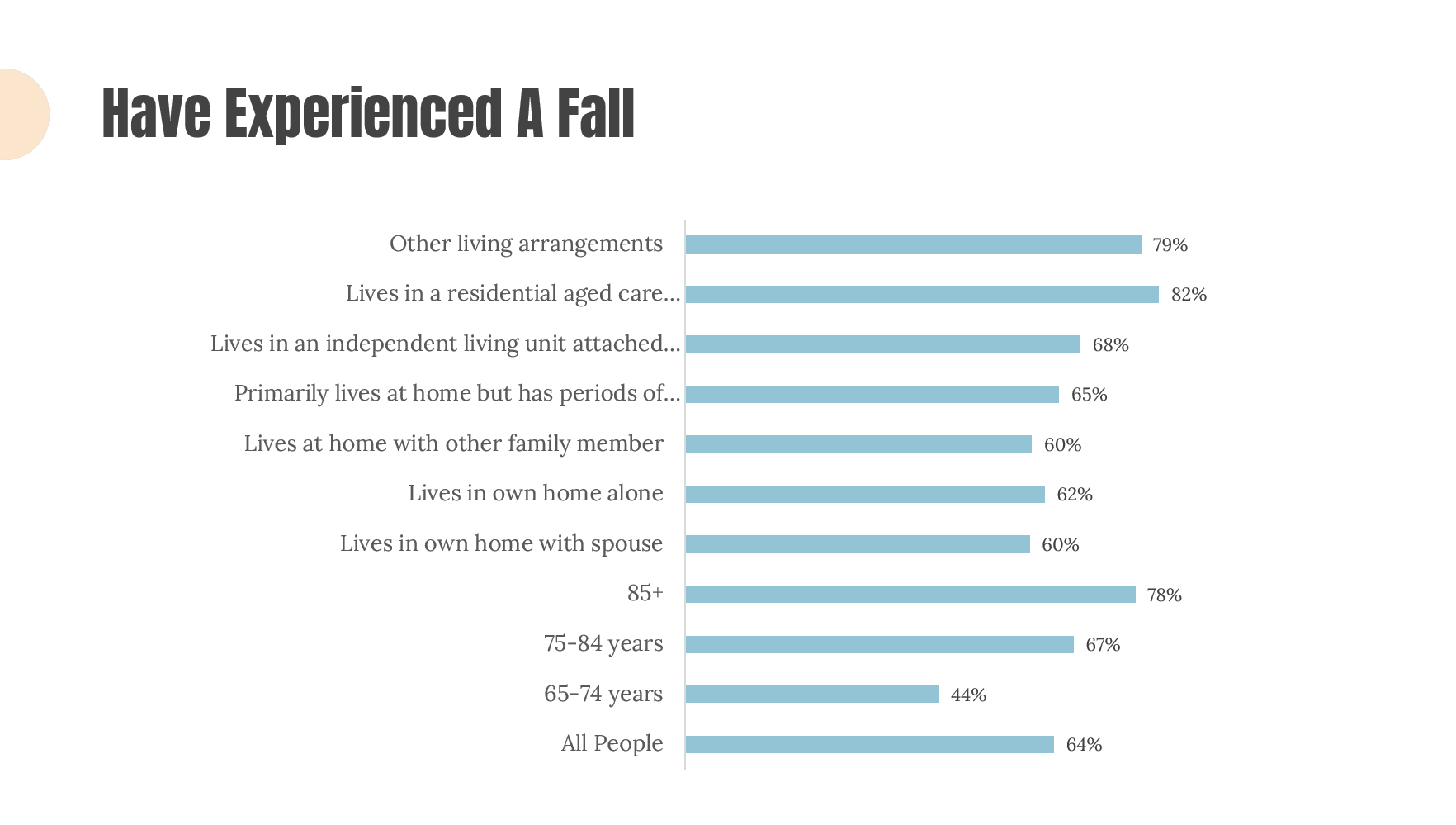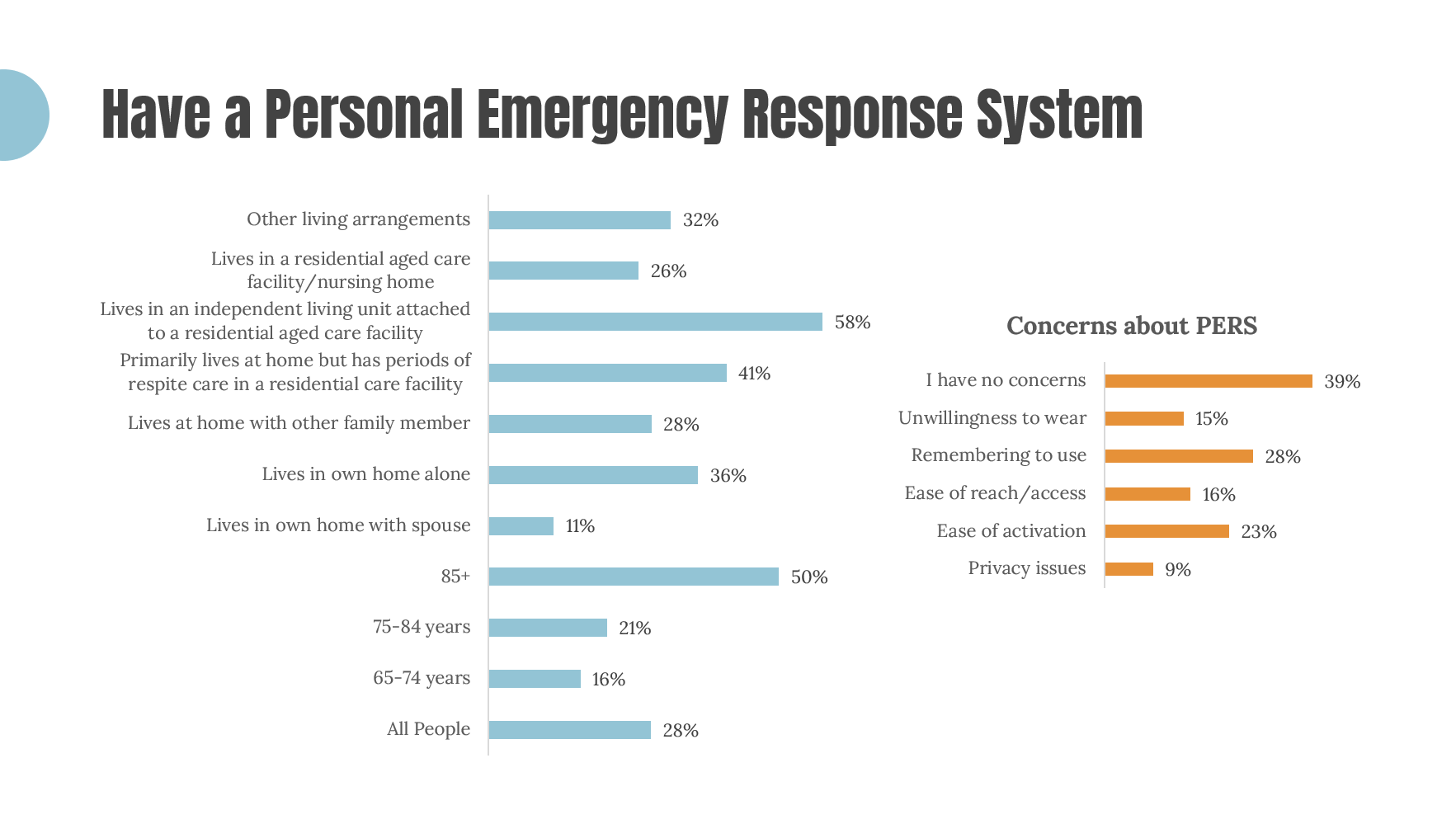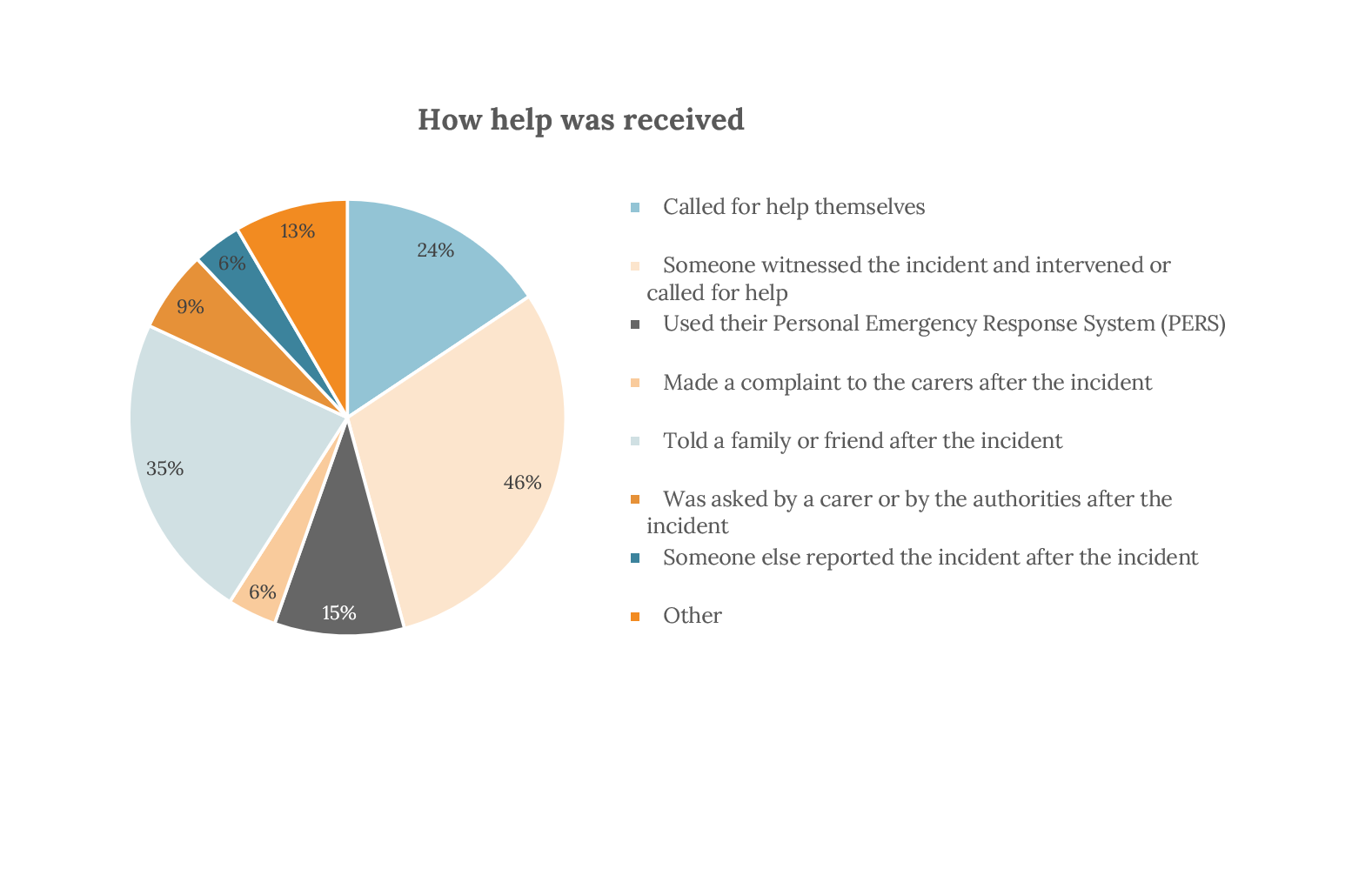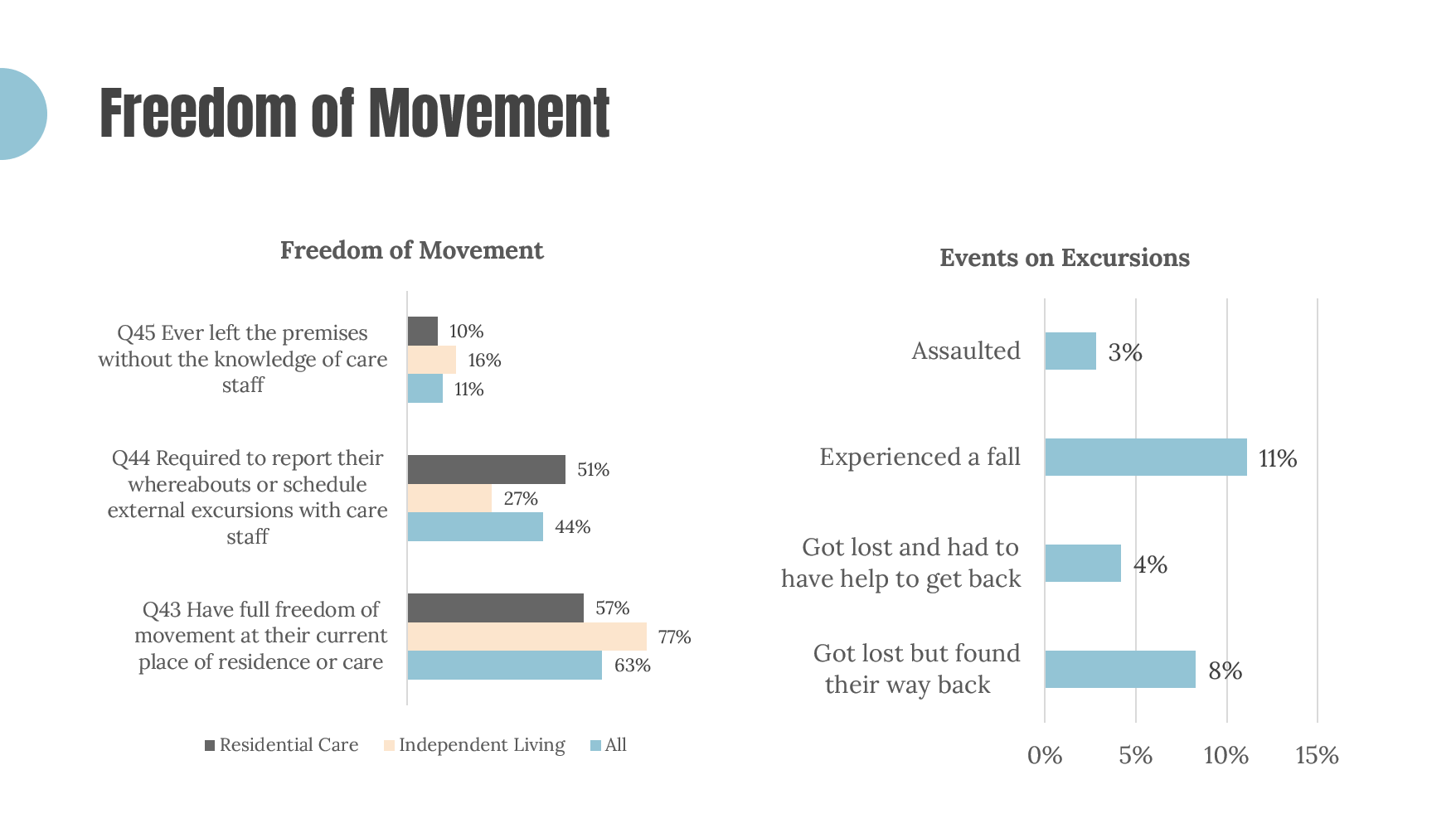Pilot Study on Older Australians - Quality of Life (Part 3 of 3)
In this final release, we present insights into falls, the use of personal emergency response systems, safety and freedom of movement of older Australians. If you missed our previous releases, you can find part 1 here and part 2 here.
Key Highlights
Almost 2 in 3 older Australians have experienced a fall.
87% have needed assistance with at least one fall and 42% required assistance with every fall.
38% of them did not get immediate help.
15% had to wait until someone found them.
In their most recent fall:
26% waited for up to an hour for help.
12% had to wait for more than an hour.
and 4% had to wait for more than 4 hours.
Most falls are caused by loss of balance (51%) or tripping over an object (30%). A further 10% was caused by a medical incident.
For older Australians living alone, 1 in 2 falls happened when noone was present or in shouting distance.
Only 15% used their phone to get help and a further 12% with their PERS.
Summary
Older Australians concerns about falling are justified. In a study by Fleming and Bayne on the inability to get up after falling, subsequent time on floor, and summoning help for people over 90; lying on the floor for a long time after falling is associated with serious consequences. Improvements need to be made for ease of access and activation for PERS.
Key Highlights
Less than 3 in 10 older Australians have a Personal Emergency Response System (PERS) despite more than 6 in 10 of individuals and family having concerns about falls.
Use of PERS is concerningly low amongst those living alone.
Common concerns for those who use PERS are remembering to use them and ease of activation.
Interestingly, concerns on privacy, ease of activation and ease of reach/access are more prevalent amongst the youngest age group (65-74). Potentially signalling that these concerns will only grow as the next cohorts will have more exposure to technology during their lives.
The most concerning findings show that 57% of users have not worn their PERS with 60% of them saying they forgot to and a further 38% did so because they feel they don’t need it.
Summary
PERS are a solution to help deal with falls but too few older Australians are using them. Respondents main concerns for PERS are ease of use, remembering to use or wear them and not wanting to wear a device. . This seems to indicate an ideal solution would be a system that does not require activation, does not need to be worn and does not disrupt their daily lives or habits. Further study will need to be done to investigate barriers to adoption such as cost and availability.
Key Highlights
14% of older Australians have experienced some form of assault, abuse or exploitation.
These incidents happen mostly from family members.
Almost half received no help with 15% of incidents never reported or investigated.
In 46% of cases, someone else witnessed the incident and provided assistance.
Summary
For these older Australians, these events are rarely a “once off” events. Some who have experienced an assault have used their PERS to access assistance, but outcomes are unclear. With multiple types of living and support arrangements, it makes managing and supporting safety challenging. An increase in adoption of smart technology that helps facilitate access to assistance might help, but only if procedures and care are clear and followed.
Key Highlights
44% of older Australians living in an aged care facility are required to report their movements.
11% of them have left the premise without notifying anyone.
Of these, 1 in 4 have experienced an incident.
These incidents include falls, assaults, getting lost and requiring help and getting lost but found their way back.
Summary
Allowing safe freedom of movement for older Australians, even those that suffer from Dementia, is a critical part of delivering quality of life. Technologies that assist families and carers locate older Australians or allow them to call for assistance will reduce associated risks of unaccompanied movement.
Increased usage of technology by those living at home and by residents of Aged Care facilities would assist greatly in managing quality of life challenges for many older Australians. However ownership and usage of these technologies such as PERS are far below the levels required to realise benefits across the population.
While barriers to adoption were not investigated in this study it is likely that these are similar to the concerns users have around the devices – they forget to use and/or find them hard to use.
PERS devices (such as those offered by LIVIUS) that do not require users to wear the device or to physically activate them in the case of a fall or other incident would almost certainly help drive uptake/adoption. Devices like these would also help ensure continuous usage – they cannot be ‘forgotten’. Privacy concerns of these devices can also be an issue, which can be alleviated by technology that do not utilise cameras, optical sensors or microphones.
These types of devices would also benefit carers and family members providing peace of mind that the individual is being ‘monitored’ at all times while maintaining privacy and that they would be notified of any incident, particularly those where the user is unable to call for support themselves
Want to know more on our fall detection system? Get in touch with us at info@livius.com.au or click the button below.





